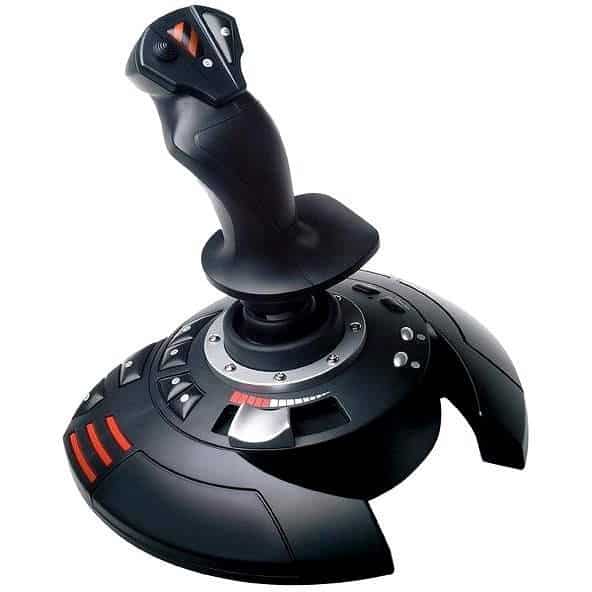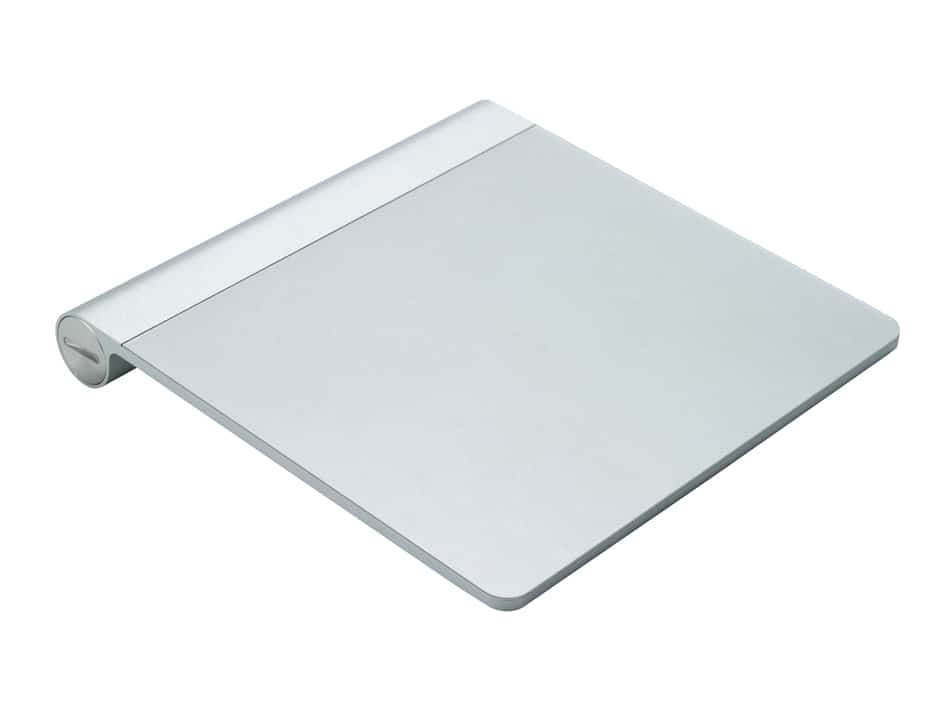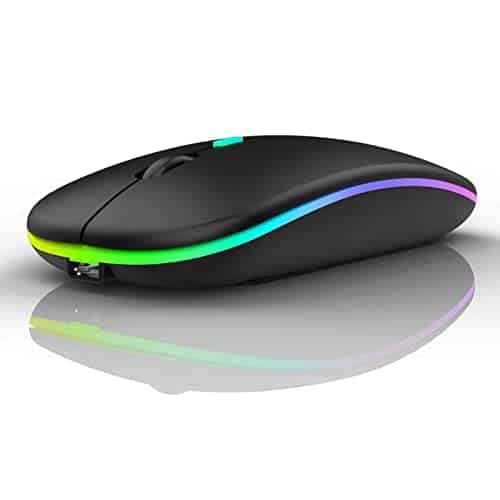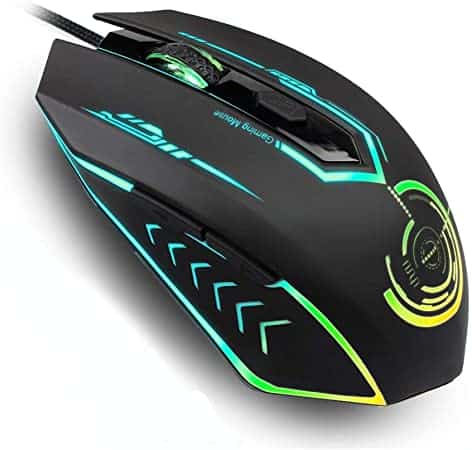The mouse is probably the most common pointing device that you will spot on most office desks. But is it really the most common pointing device on laptops?
Laptop pointing devices include mouse, keyboard, touchscreen, graphic tablets, optical mice, laser mice, multi-touch screen, trackball, joystick, game controller, gesture recognition system, eye tracker, and others.
In general, all these devices have their own advantages and disadvantages.
For example, a mouse has an advantage over other pointing devices in terms of accuracy but it requires more space than any other pointing device.
On the contrary, some pointing devices such as touchpads require less space but they lack precision compared to mice.
So, What Are Pointing Devices?


A pointing device is a hardware unit that allows the user to input data into a computer.
The pointing devices examples are Mouse, touchpad or trackpad, graphics tablet stylus, trackball, light pen, eye tracking device, and so on.
A pointing device gives liberty to its users to control and enter data into a laptop.
Typically, a pointing device performs with the help of physical gestures, i.e., point dragging or clicks, etc.
Nowadays most laptops are equipped with the capability of rotational input from a touchpad or mouse function for entering data onto a laptop in response to hand movements on the surface of the input device.
The pointing devices mentioned above are the most common pointing devices on laptops.
The Most Common Pointing Devices on Laptops
Touch Screens
Touch screens provide both accurate positioning and ease of use for small form factor computers like smartphones and tablets.
However, there are two main problems associated with using touchscreens; firstly, when used with gloves, the fingers cannot detect where exactly they are touching the surface because of the thickness of the gloves.
Secondly, if the finger touches the wrong area of the screen then this will not register correctly.
Another problem with touchscreens is that you need to clean them regularly otherwise dust particles get stuck between your hand and the glass which makes it difficult to accurately position yourself.
Keyboards


The keyboard is another important component of a laptop. Most commonly found on desktops, laptops, and notebooks, the keyboard consists of several rows of buttons arranged along a flat panel called “keyboard matrix”.
There are also many types of keyboards available today including membrane keys, mechanical switches, rubber dome keypads, and chiclet-style.
Membrane keyboards are very popular due to their low cost and compact size. They do however tend to wear out after prolonged usage especially if the user does not take care while typing.
Each button on the keyboard corresponds to a letter of the English alphabet or symbol.
To type text, each row of buttons must be pressed simultaneously. Some models may include additional function keys located below the regular alphabetic layout.
These extra keys allow access to special features such as sound volume controls, language selection, browser favorites menu, calculator, calendar, and clock among others.
Other advanced models may feature dedicated media playback keys, USB ports, Ethernet port, VGA output, headphone jack, microphone, speakers, webcam, Wi-Fi card, Bluetooth module, SD memory slot, DVD drive, CD/DVD player, hard disk drive, floppy drive, and battery compartment.
Track Pad


Of all the above pointing devices, the most common one is probably the TrackPad. It was introduced by Apple Inc. back in 1998 with Mac OS 9 operating systems.
Since then it has been present in almost every single generation of Macintosh desktop PC from 1999 onwards.
Today, it is still widely supported across various platforms including Windows XP/Vista/7/8 and Linux distributions. This is mainly due to its simplicity and reliability.
Unlike traditional mice, trackpads don’t require batteries, making them easier to carry around.
Also, unlike most modern mice, trackpads usually come preloaded with software allowing basic navigation functions such as scrolling up and down, left and right-clicking, double-tapping, and dragging.
Finger touchpad or track pad
A finger touchpad or trackpad is a device that uses fingers to enter data by moving a cursor.
The finger touchpad on laptops is generally located in the center of the keyboard.
Trackball, Stylus, Light Pen, and Web camera methods.
All of these are used to move a cursor on a laptop screen instead of using fingers.
These methods also use their own special device for moving a cursor on the laptop screen but they differ from finger input by use of non-finger surfaces or objects i.e. trackball, stylus, light pen, or a webcam.
The trackball method is operated by rolling a small ball with one finger over a stationary ball or over grooves on a surface.
The major difference between trackball and mouse is that it allows three-dimensional movement while the mouse only has two dimensions of movement.
The jotting method or stylus pen uses a stick or pointy object to move a cursor on the laptop screen instead of fingers.
The Light Pen method utilizes an optical sensor unit to detect light from a light source in its tip that translates into cursor movement based on the location and intensity of the directed beam of light.
The Web camera method is also called eye tracking and it uses a webcam to track a user’s eye movements to move a cursor on the laptop screen.
The Most Common Pointing Device Technology on Laptops


Of all the above-mentioned devices, the most common pointing device for laptops is the trackpad or touchpad.
It is also the easiest to use: it is possible to move the cursor using fingers, a tablet stylus, or some other means of input simultaneously with the movement of this device.
It is very common for a manufacturer to include a pointer on its laptops and it can be one of the most important software features on a laptop.
A pointer on most laptops is used as a multi-touch input device which allows you to select items on a computer screen by moving your hand over it without clicking, but sometimes clicking too hard or in other ways that are not intuitive.
Touch Technology
The ability of laptops to interact with you, i.e. a user, by touch is a very important feature of laptops.
Touch is more natural than the keyboard and mouse, but also requires a greater level of sensitivity from the computer to respond to you.
Fingers are great at pointing or dragging objects but do not provide enough of a distinction for touch devices to determine that the fingers are on the screen.
For many applications using fingers for input on a touch screen device allows you to interact with the laptop by using gestures as a user.
Touchpads or trackpads allow laptop users to use their fingers for input instead of other devices such as mouse and keyboard which allow them to point and select items without moving their hands from a home position such as clicking on icons or dragging an object.
This makes laptops more convenient to use and makes it possible to avoid long breaks for repetitive motion pains.
It adds flexibility and simplicity; it makes the user enjoy a clean look unfettered by cables.
Touchscreen
In addition, some laptops have touch screens that allow the user to select or provide input by touching the screen with his/her finger instead of using a touchpad or trackpad.
This capability is very useful in Tablet PCs which are used in various places such as hospitals, education institutions, and industrial sites, etc.
Touch screen technology is developed with the aim of delivering full functionality on modern PCs in an intuitive interface that allows seamless interaction with users.
Touch screen technology can be used not only on laptops but on desktop computers as well.
Touch screens that can be used on desktop computers are generally designed to work in conjunction with a keyboard and mouse. Touch screen is the method of using fingers to control your computer by touching the screen.
Touch is one of the most natural interfaces for humans, more natural than using a mouse and keyboard because touch is how we interact with our environments in real life.
In addition, being able to reach out and interact directly with what you are working on gives you a greater sense of connection with your environment than if you were working off-screen or inside a box.
Let’s say you are browsing the Internet on your PC, and you want to open a folder. Instead of clicking on the mouse and navigating to that folder, you can just take your finger and tap the folders that you want to open.
Or if there is an icon that is too small on the screen where you would like to place something, instead of using a mouse, touch technology allows your finger to interact directly with that icon or link.
Summary
The question of what is the most common pointing device for laptops is wide. There are multiple devices that are used for this purpose and different users have different preferences.
Some of the most common pointing devices as discussed in this post include keyboard, mouse, optical mice, laser mice, touchscreen, graphic tablets, multi-touch screen, joystick, game controller, gesture recognition system, trackball, and eye tracker, among others.
However, the trackpad takes the biggest share of pointing devices for laptops.

